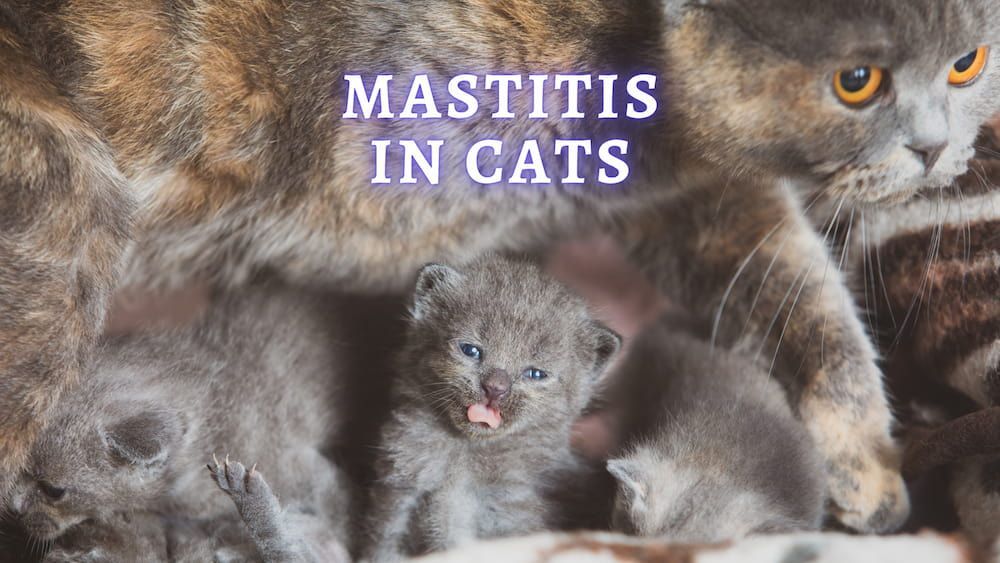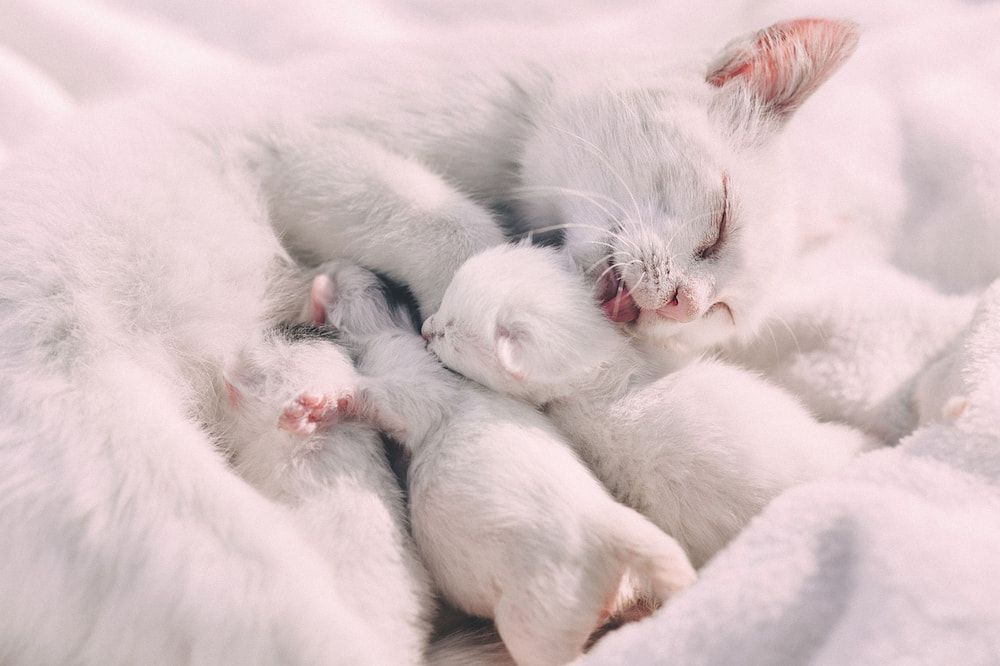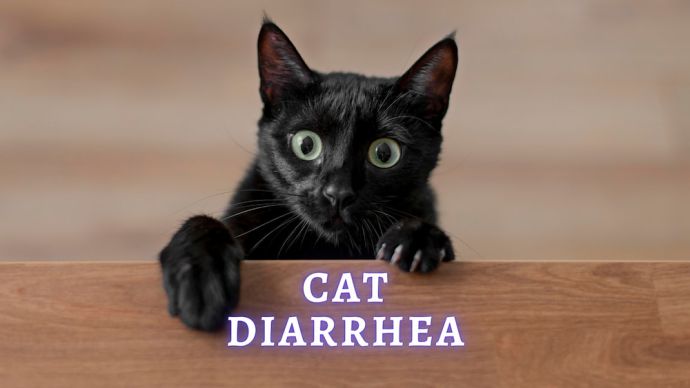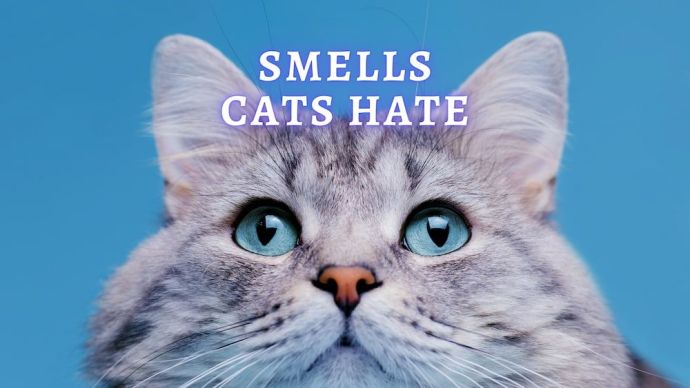Mastitis In Cats: What Does Mastitis Feel Like In Cats?
Written by:
Author: Marissa Prizio
Marissa Prizio attended the University of New Hampshire and earned a bachelor's degree in biomedical Animal Science. Marissa has always enjoyed writing; she was even mixing literature classes into her science major in college. During her writing career, she has edited eBooks, written for a variety of websites, and created audio-visual courses for sustainability.
View all 36 articlesLearn about our editorial process and veterinary review board.
Viewed: 82
Updated on: 12/27/2022
Mother cats face a myriad of challenges even after their kittens are born. After giving birth, most cats experience milk production, and if all goes well, the cat’s kittens are provided with a steady source of nutrients. However, there are cases in which milk production can be impaired by a condition known as mastitis. This infection can be severely detrimental to the mother cat and her kittens, so it is essential to understand the signs, symptoms, and road to recovery.
What is mastitis?
In simplest terms, mastitis is an infection of the mammary glands. In almost any lactating mammal, this infection can happen to a single mammary gland or multiple mammary glands. The general public may refer to this condition as a breast infection even though mammary glands are not referred to as breasts on all animals.
A breast infection, scientifically referred to as mastitis, is commonly seen postpartum.[1] After a cat gives birth, their milk production picks up. This increase in milk and nursing kittens expose the mammary glands to bacteria that can result in a bacterial infection.
Most forms of mastitis start as acute mastitis, where a single gland is infected in lactating female cats that have experienced an injury to that gland or reside in unsanitary conditions. If left untreated, mastitis progresses. This results in acute septic mastitis, during which the infection spreads to other areas of the body. Septic mastitis can be deadly to mothers and their young, so it should be taken very seriously.[1] [2] [3]
In severe cases, cats mastitis infections have been known to become gangrenous and necrotic.[3] This often appears as dark purple or black mammary tissue and it is typically coupled with an overall appearance of severe illness in the mother. Severe mastitis like this can cause permanent damage. While mastitis normally stems from bacteria entering a milk duct, it can also result from milk that builds up without release.[2]
READ MORE: How to tell if a Cat is in Pain? (Veterinary Advice)
What does mastitis in cats feel like?
Identifying a mastitic infection is the first step in curing a mastitic mammary gland. Since this is an infection, affected glands tend to show typical infection signs that mature as the infection intensifies. These symptoms include;
- Swelling;
- Redness;
- Abnormal discharge;
- Pain in the affected area;
- Heat;
These symptoms are most common in breast tissue affected by acute mastitis, and many of these symptoms can be felt with gentle palpation. Any signs of tissue death or an open wound on the breast tissue should also be a reason for concern. Milk quality and production tend to decrease with a breast infection, so offspring that fail to thrive can be another sign of disease.[1] [2]
Milk accumulation and swelling in affected mammary glands may feel like mammary tumors. Acute mastitis and tumors can share some symptoms, especially as a cat becomes systemically ill with either disease. A veterinary assessment is crucial for a definitive diagnosis of mastitis and effective treatment.
How is mastitis diagnosed?
Mastitis in cats can be diagnosed by physical examination since many clinical signs are easily recognizable. Kittens from the cat may even be assessed if they are not gaining weight, as this is a sign that the mother may not be well. Depending on what other symptoms are present, a veterinarian may prefer to have further testing done so they can be confident in their diagnosis and treatment methods.
Blood samples may be used in a complete blood count. This testing method allows the veterinarian to determine if a cat’s white blood cells, red blood cells, or platelets are at abnormal levels. A high white blood cell count is indicative of infection and generally calls for antibiotic treatment.[1] An ascending infection will likely result in an even higher white blood cell count, which can inform the veterinarian of the severity of the infection.
If milk production is still possible for a mastitic cat, veterinarians may also run a milk cytology. This is a method that includes the microscopic examination of a milk sample. The presence of inflammatory cells and bacteria suggests the presence of an infection.[1] [2]
Diagnostic processes can be taken a step further through the use of a bacterial culture. This is often reserved for cases in which the bacterial infection is not responding to general antibiotics and the specific bacteria at work must be identified to determine the most effective and appropriate treatment.[1]Some forms of infection, like resistant strains of escherichia coli, may require lab testing to determine the most effective antibiotics.
How to Treat Mastitis in Cats
In mild cases, most cats are able to stay at home while they are treated with oral antibiotics and pain medications. Over time, these broad-spectrum antibiotics resolve the infection, and the pain medications make it possible for the affected cat to still comfortably care for her kittens.
A warm compress is normally recommended for the affected mammary gland. This helps draw blood to the area to increase healing and may even relieve some pain.[2] Cabbage leaves are another home remedy commonly used in the treatment of mastitis.[1] While they can not be considered a cure, they can help decrease some pain and inflammation when applied in intervals.
In some cases, veterinarians may even recommend hand-milking the infected gland. This has many similar benefits to treatment with warm compresses, but it also helps the affected mammary gland expel excess material built up from the infection.
Due to the poor milk quality caused by mastitis, the risk of transferring infection, and the medications now in the mother cat’s system, it isn’t always reasonable for cats to be nursing kittens at this time.[2]They can warm and care for their kittens, but a veterinarian will recommend a suitable milk replacer instead.
More severe cases of mastitis will prevent cats from caring for their kittens, as this condition can require hospitalization. Septic mastitis may require more aggressive treatment, regular vital monitoring, intravenous fluids, and even surgical removal of the affected gland.[1] [2] [3]
In cases that require surgical removal of mammary glands or intravenous fluid therapy, it can take weeks for a cat to make a full recovery. This can have a major impact on the mother cat’s quality of life and her kittens’ development, which is why it is important to recognize and take action as soon as signs of mastitis arise.
READ MORE: How to Raise a Kitten: Veterinary Advice
How to Prevent Mastitis in Cats
Early treatment is great, but prevention is even better when it comes to mastitis. Throughout your cat’s pregnancy, and even after weening, mammary glands should be checked for normal milk accumulation and signs of damage. If a female cat shows signs of excessive milk buildup at any point, warm compresses and having kittens nurse from the overfull gland are encouraged.
Damage can happen to mammary glands when kittens nurse as their sharp kitten teeth grow in. Any lacerations pose a risk for developing mastitis and should be watched closely for appropriate signs of healing.[1] [2] At the first sign of infection, it is best to visit a veterinarian for both the mother and her kittens.
Risk factors include unsanitary housing and previous cases of mastitis A previously affected mammary gland may become an issue or non-functional if a cat gets pregnant again, so avoiding future litters can be in the best interest of some individuals.
RELATED: How to Care for a Pregnant Cat
Article Sources:
- Weir, Malcolm, and Catherine Barnette. “Mastitis in Cats.” VCA Animal Hospital, vcahospitals.com/know-your-pet/mastitis-in-cats.
- Memon, Mushtaq. “Mastitis in Small Animals – Reproductive System.” Merck Veterinary Manual, merckvetmanual.com/reproductive-system/reproductive-diseases-of-the-female-small-animal/mastitis-in-small-animals.
- Wilson, Courtney. Feline Gangrenous Mastitis. ncbi.nlm.nih.gov/pmc/articles/PMC3573639/.
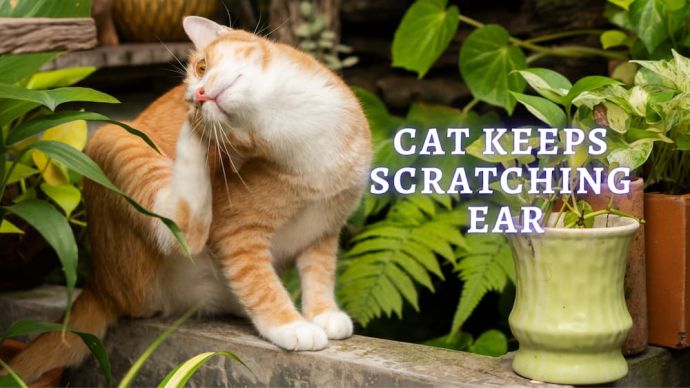 Cat Veterinary Tips Why is my Cat Scratching their Ears? (Veterinary Advice)
Cat Veterinary Tips Why is my Cat Scratching their Ears? (Veterinary Advice) - 1194
- 0
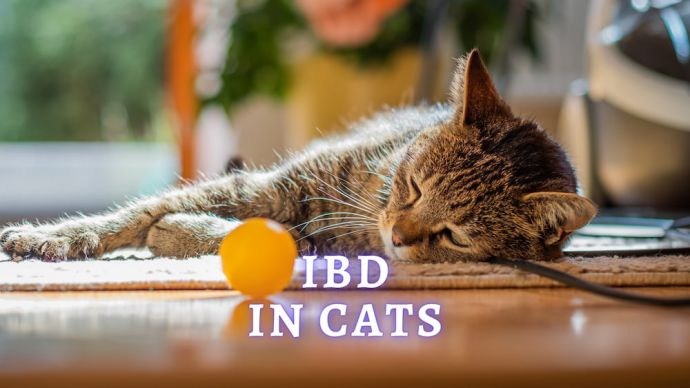 Cat Care IBD in Cats: Symptoms, Diagnose, Treatment and Prognosis (Vet-Approved Advice)
Cat Care IBD in Cats: Symptoms, Diagnose, Treatment and Prognosis (Vet-Approved Advice) - 53
- 0
 Cat Care Why Does My Cat Attack My Legs? 10 Reasons Why and What To Do About It (Vet-Approved Advice)
Cat Care Why Does My Cat Attack My Legs? 10 Reasons Why and What To Do About It (Vet-Approved Advice) - 45082
- 21
 Cat Veterinary Tips Cat Stomach Gurgling: Vet Advice on Why is Your Cat Stomach Gurgling?
Cat Veterinary Tips Cat Stomach Gurgling: Vet Advice on Why is Your Cat Stomach Gurgling? - 33729
- 4
 Cat Veterinary Tips My Cat Lost its Voice: Can Cats get Laryngitis? (Vet Advice)
Cat Veterinary Tips My Cat Lost its Voice: Can Cats get Laryngitis? (Vet Advice) - 22889
- 13









